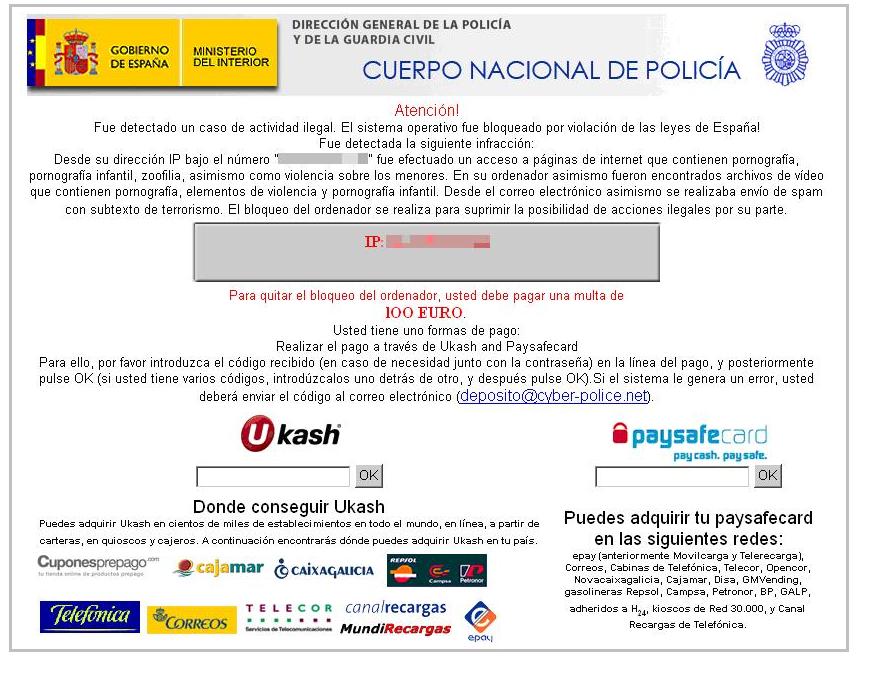Most of us have been introduced to a remote lifestyle by this point. Meetings, classes, and workouts are now being hosted virtually. Fortunately, that means greater access for more people and scheduling flexibility. Unfortunately, it also means screen time is at an all-time high. The average adult gets 63.5 notifications per day, many of which are viewed within minutes, according to a study by ACM.
Too much tech can negatively affect our relationship satisfaction, cause physiological damage, and have adverse health effects according to NCBI. The Association for Computing Machinery observed 200 million notifications from 40,000 users and found that workers find it difficult to return to a task after being interrupted by a notification. When the task is more mentally demanding, the more prominent the effect.
Helpful tips to create media boundaries include tracking and monitoring screen time usage, turning off excessive notifications, muting and blocking negative accounts, setting parental controls, and encouraging a “no phone” rule with friends.
Tips for Setting Technology Boundaries
50% of technology users will click on a notification within 30 seconds of receiving it, according to ACM. If the notification isn’t viewed within five minutes, the chances of opening it reduces to 17%.
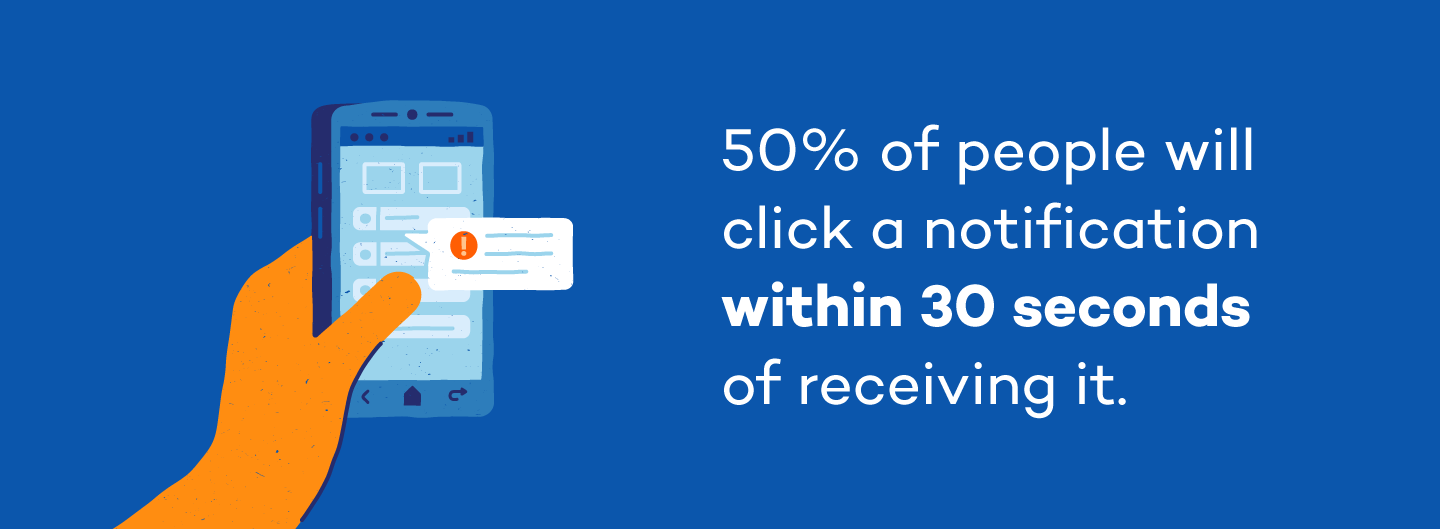
How can you create healthy boundaries with technology and eliminate its negative effects? First, understand where you’re using the majority of your time on your devices. Then consider the following strategies where applicable:
Daily Technology Best Practices
Creating general media rules to follow throughout your day create routines and healthy boundaries with technology so you can feel more satisfied.
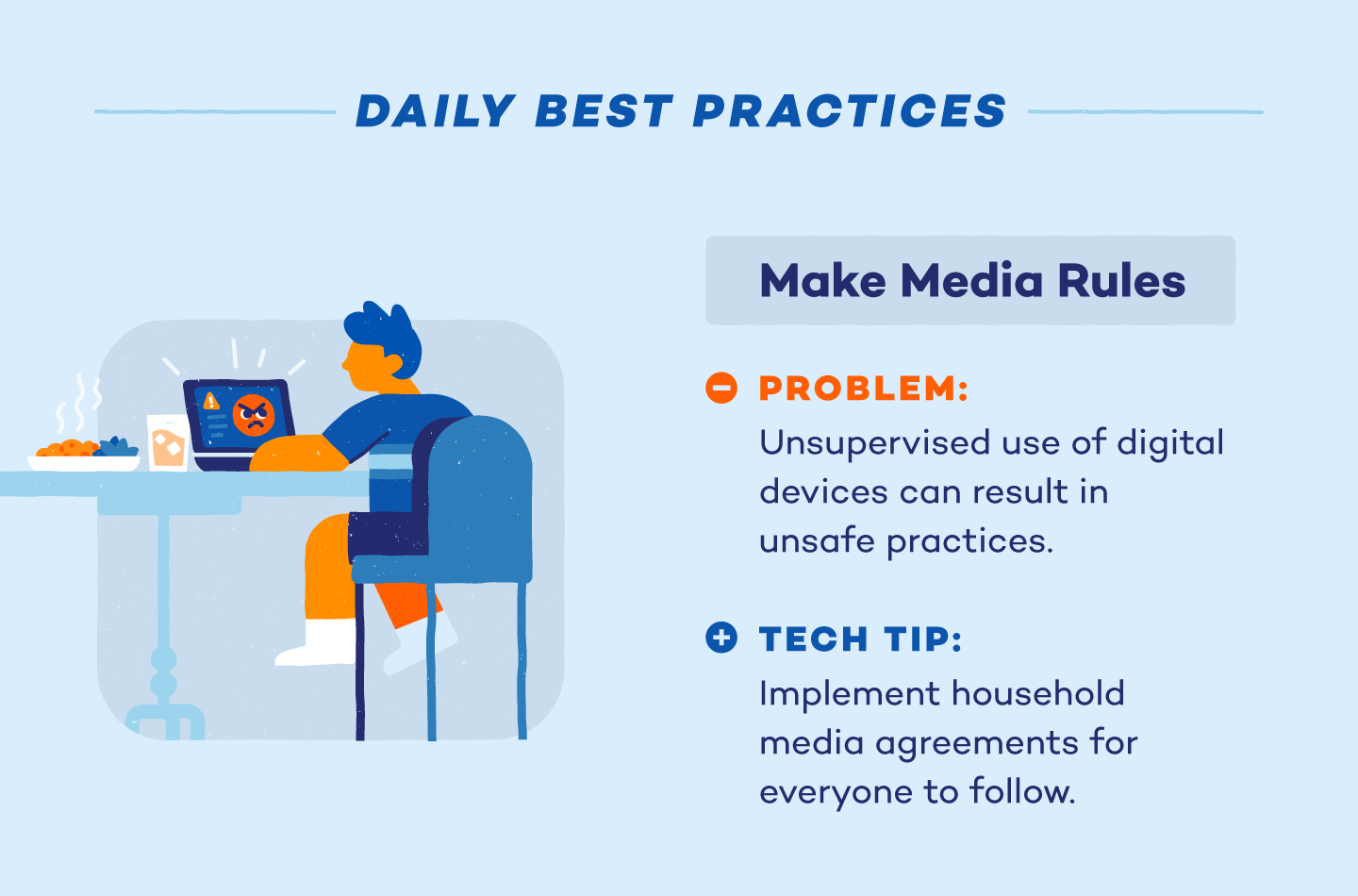
- Make Media Rules: Implement family media agreements for everyone in the household to manage expectations of media use and encourage healthy online activity.
- Encourage Face-to-Face Interactions: when you’re with company, make an agreement not to use technology and embrace being in the moment.
- Detox: Take time to disconnect completely from technology, whether a day, a weekend or a full week.
Morning Technology Best Practices
Waking up and immediately and grabbing for your phone is a stressor. Starting your day mindfully and without passive technology helps guide a healthy remainder of the day.
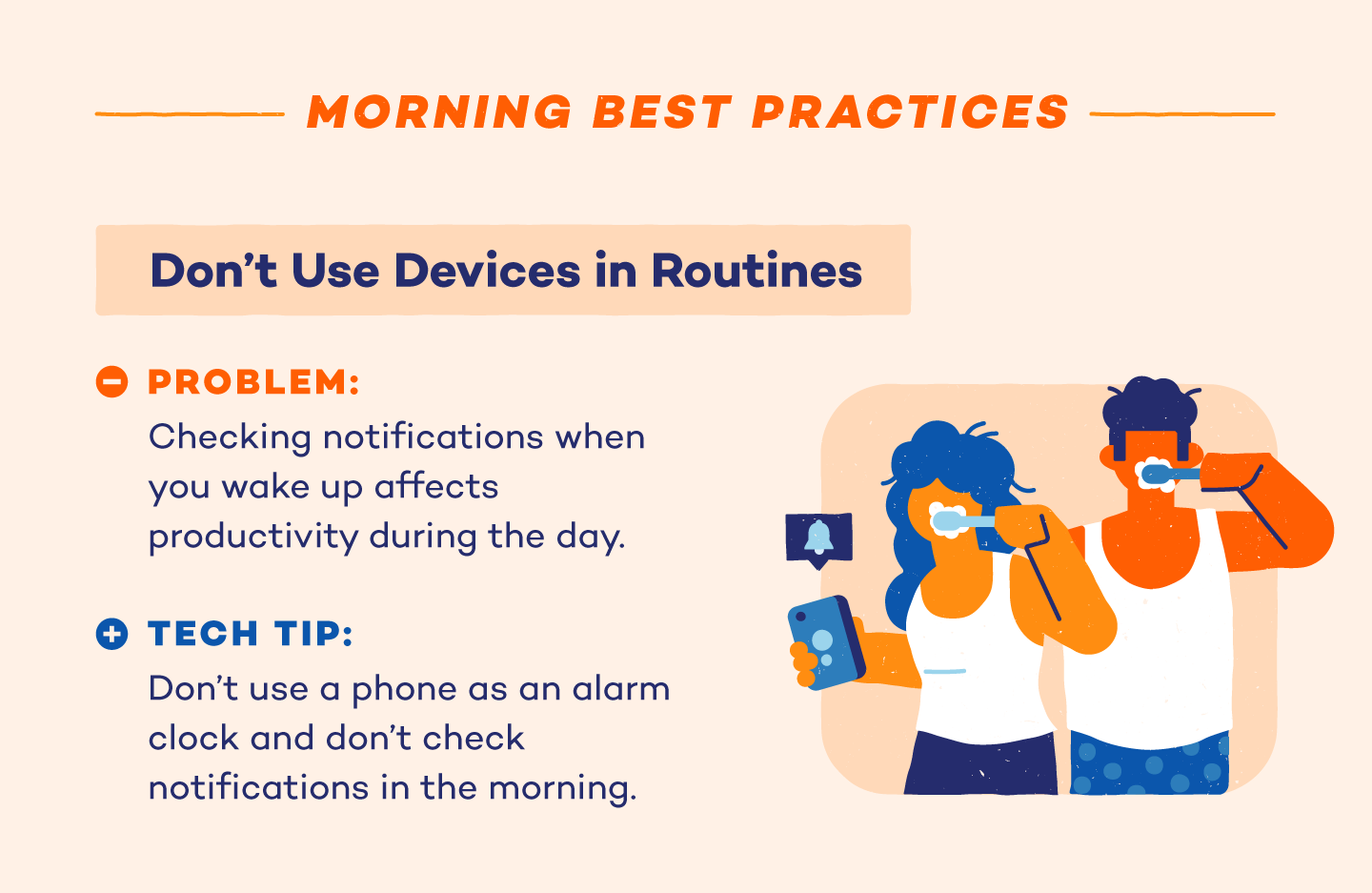
- Don’t Use Devices In Routines: Eat breakfast before using your devices and avoid using your phone or computer as an alarm clock.
- Use Tech Actively: when using devices, opt for active activities like educational media and video games in lieu of passive ones like watching TV.
Afternoon Technology Best Practices
When you’re in the mid-day slump, the last thing you need are negative reminders from notifications and social media. Cut out the excess technology for an afternoon boost.
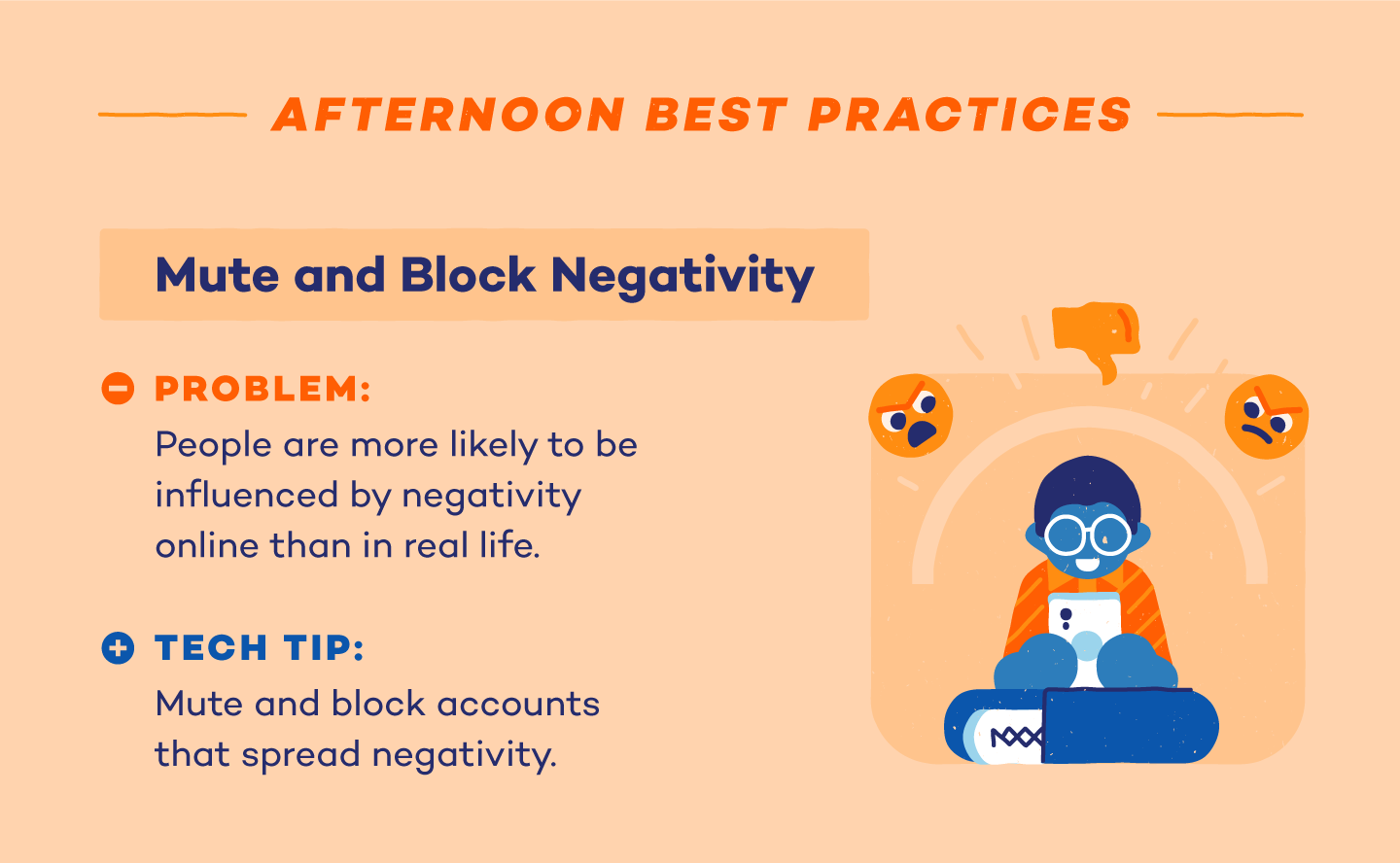
- Mute And Block: avoid content from negative accounts by muting and blocking where applicable and use the “show less often” feature for irrelevant ads.
- Limit Notifications: Manage which apps can send notifications, and turn off applications that don’t warrant an immediate response.
- Manage Usage: understand where the majority of your time spent on technology goes, gauge usage, then create relevant screen time limits.
Evening Technology Best Practices
The National Sleep Foundation reports that using technology too soon before bed decreases the natural production of the hormone melatonin, which aids restful sleep.
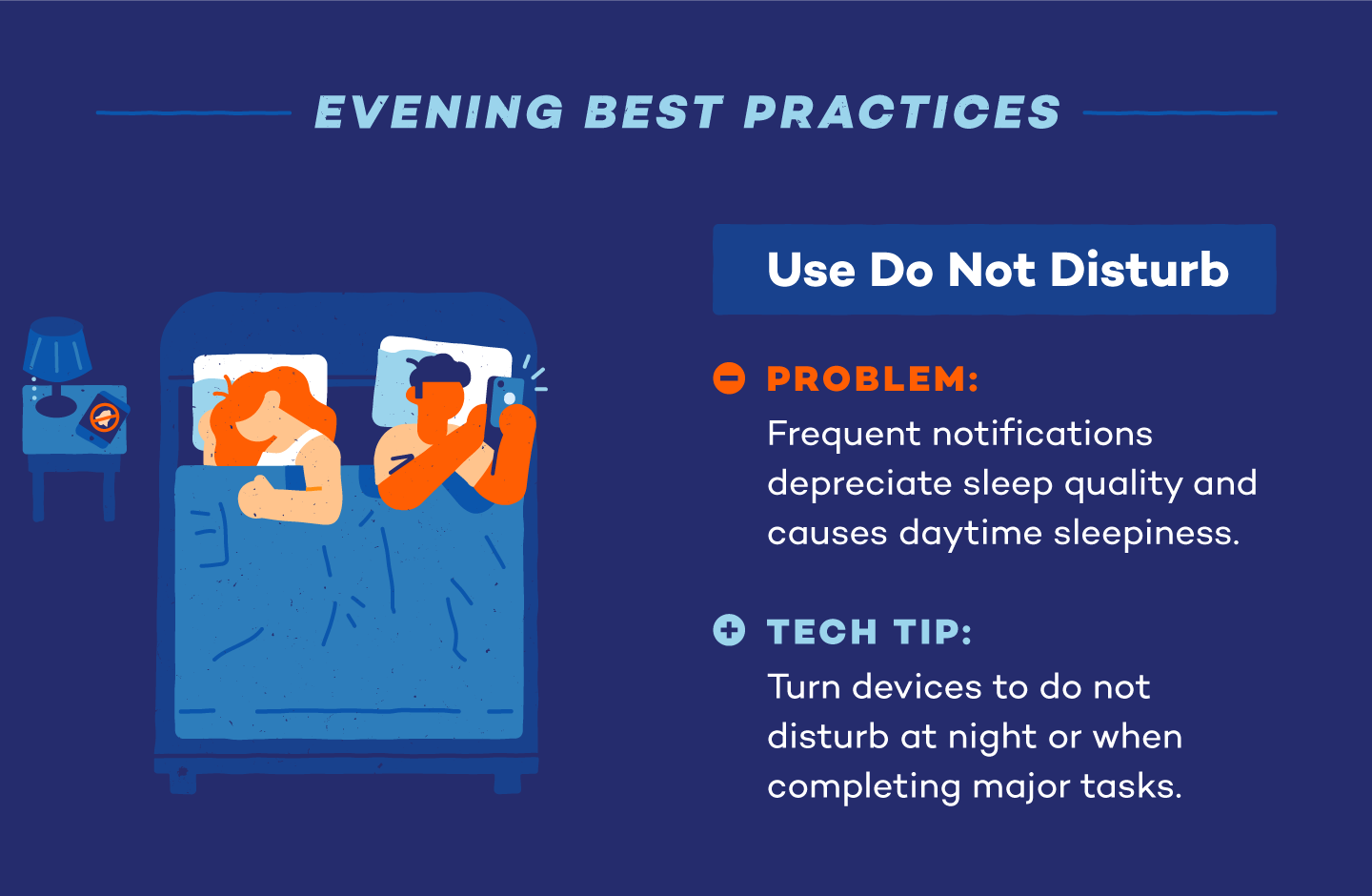
- Use Do Not Disturb: turn your devices to do not disturb at night and when completing large tasks.
- Respect Sleep: remove technology from the bedroom and avoid using media devices an hour before bed.
How to Limit Screen Time
The effects of excessive technology can be negative, especially on children, whose minds are still developing. A good first step to creating healthy boundaries is to limit screen time on mobile phones, computers, televisions, and gaming systems. Check the usage time in the settings for a benchmark and decrease the time spent on each device slowly. Lead by example, and ensure family media agreements are in place so the expectations around technology are clear.
Limit Screen Time on Mobile Phones
Finding out where the majority of time is spent on your phone is useful to understand how you’re managing your screen time. The newest iOS provides a useful breakdown of how the device is being used separated by software. Similarly, Android devices running Nougat OS or newer can set in-app screen time limits.
Alternatively, Panda Dome Family is an internet security and protection software available for iOS and Android. With these parental controls, you can block apps, restrict usage to prevent addictions, and limit internet access to specific hours.
How to Set Screen Time Limits on iOS Devices
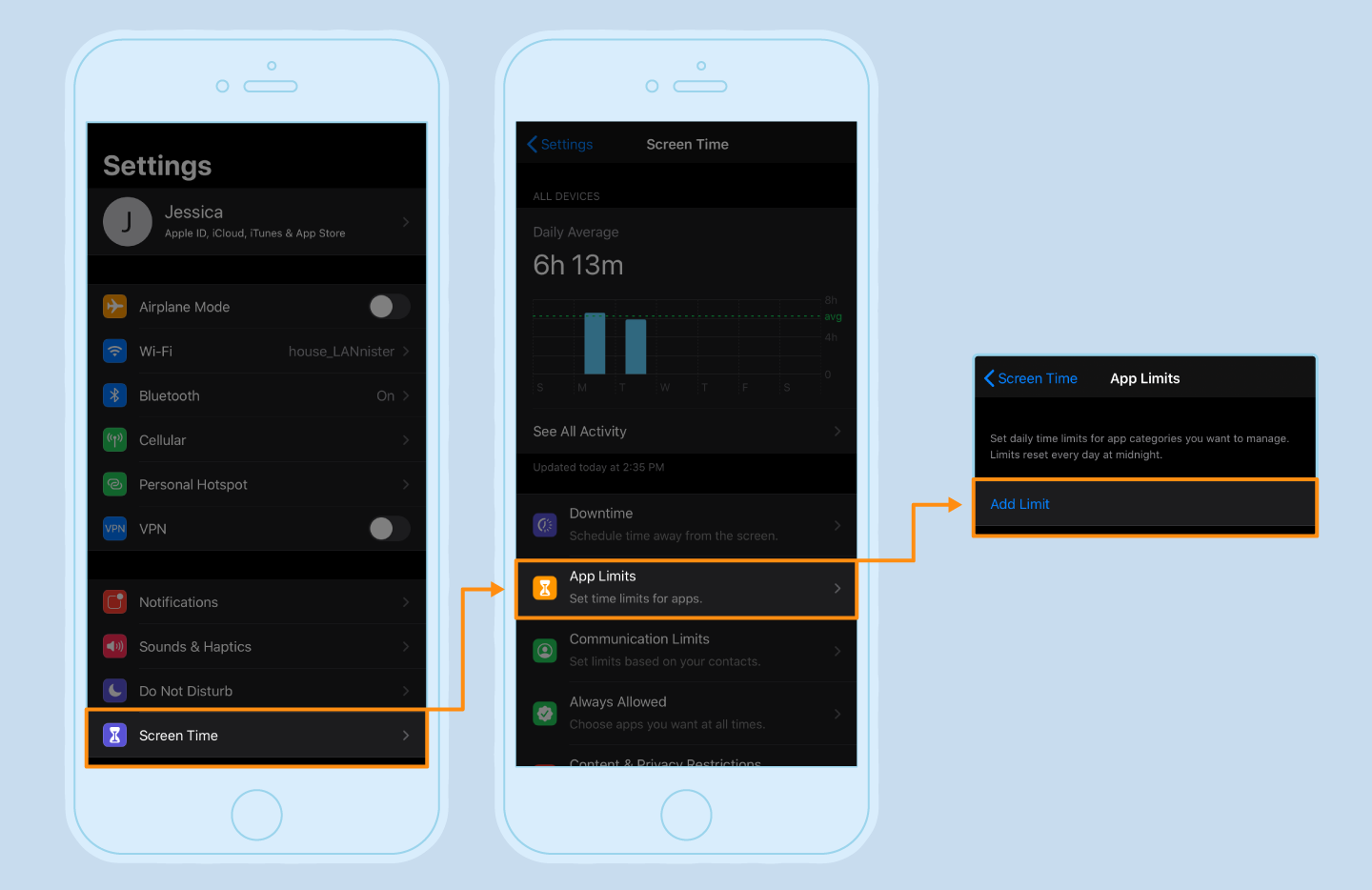
- Open your system preferences and select screen time to enable the feature.
- Use the app limits to set limits on the specific software.
- Choose the maximum amount of time you want to spend on the app per day and add.
How to Set Screen Time Limits on Android Devices
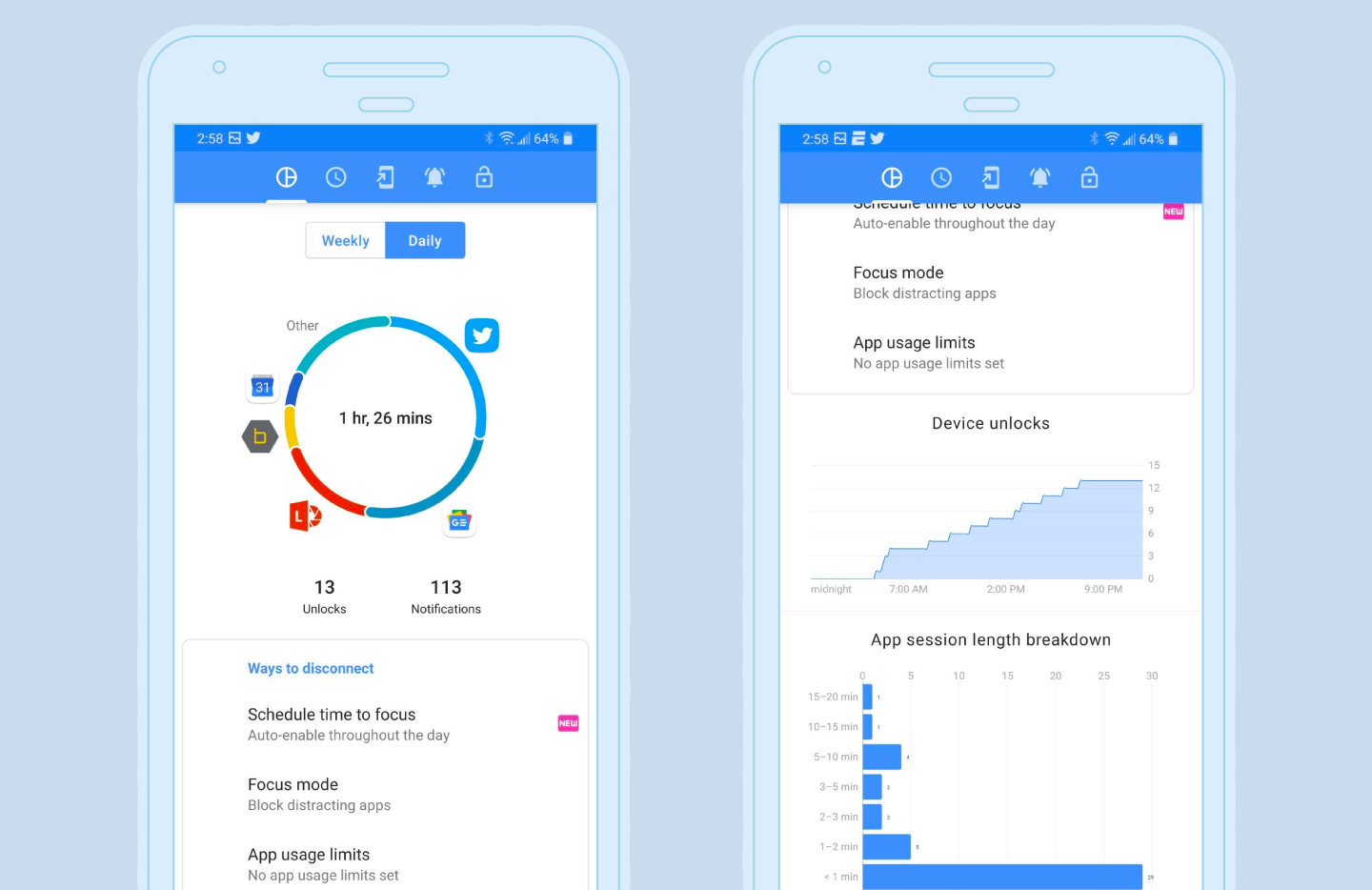
- Open your settings and select digital wellbeing tools.
- Use the app timer to set limits on the specific software.
- Choose the maximum amount of time you want to spend on the app per day and add.
Limit Screen Time on Video Games
The video game market will reach $300 billion by 2025, according to Global Data. It’s not hard to see why when you consider the appeal of interconnectivity and online socialization. On the downside, however, games can be a form of escapism, especially during times when we’re stuck at home. A healthy relationship with video games is about being able to balance the hobby with other responsibilities.
Avoid gaming setups in your room and children’s bedrooms, which can negatively affect sleep behaviors, according to Digital Commons at the University of Rhode Island. Many consoles don’t have built-in controls for screen time management. However, adding apps to block usage on computers and cell phones can be a useful alternative to help shake the habit.
Limit Screen Time on Computers
If you work on a computer, screen time limits can be especially useful. Not only will it cut out distractions, but it will streamline work to be completed within a set timeframe. Windows and Macs have built-in settings to create these limits.
How to Set Screen Time Limits on a Mac
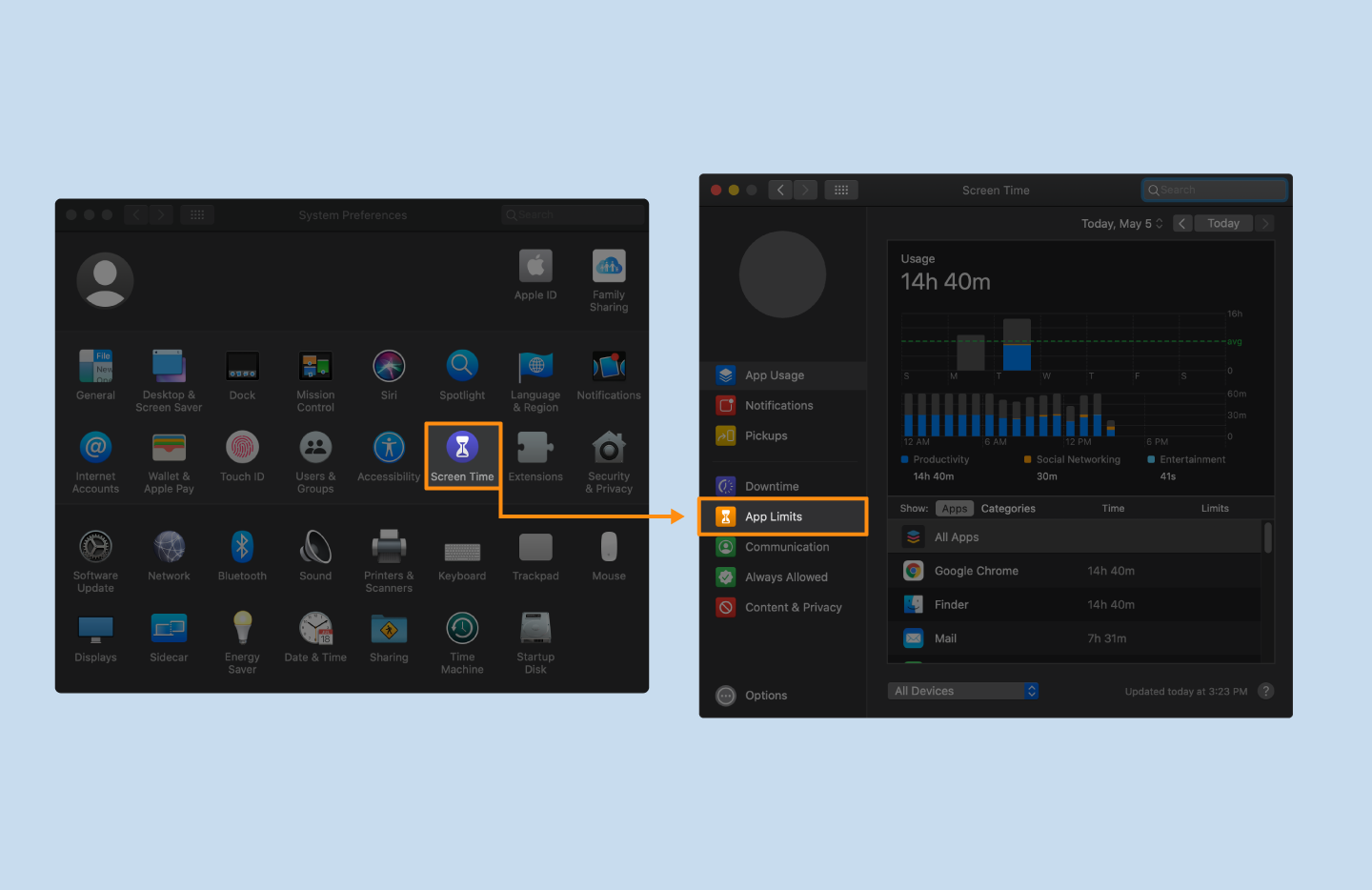
- Open system preferences from the Apple icon.
- Choose screen time from the menu and select options.
- Select app limits and click the plus arrow to add a new limit.
- Choose the app and set limits accordingly.
How to Set Screen Time Limits on Windows
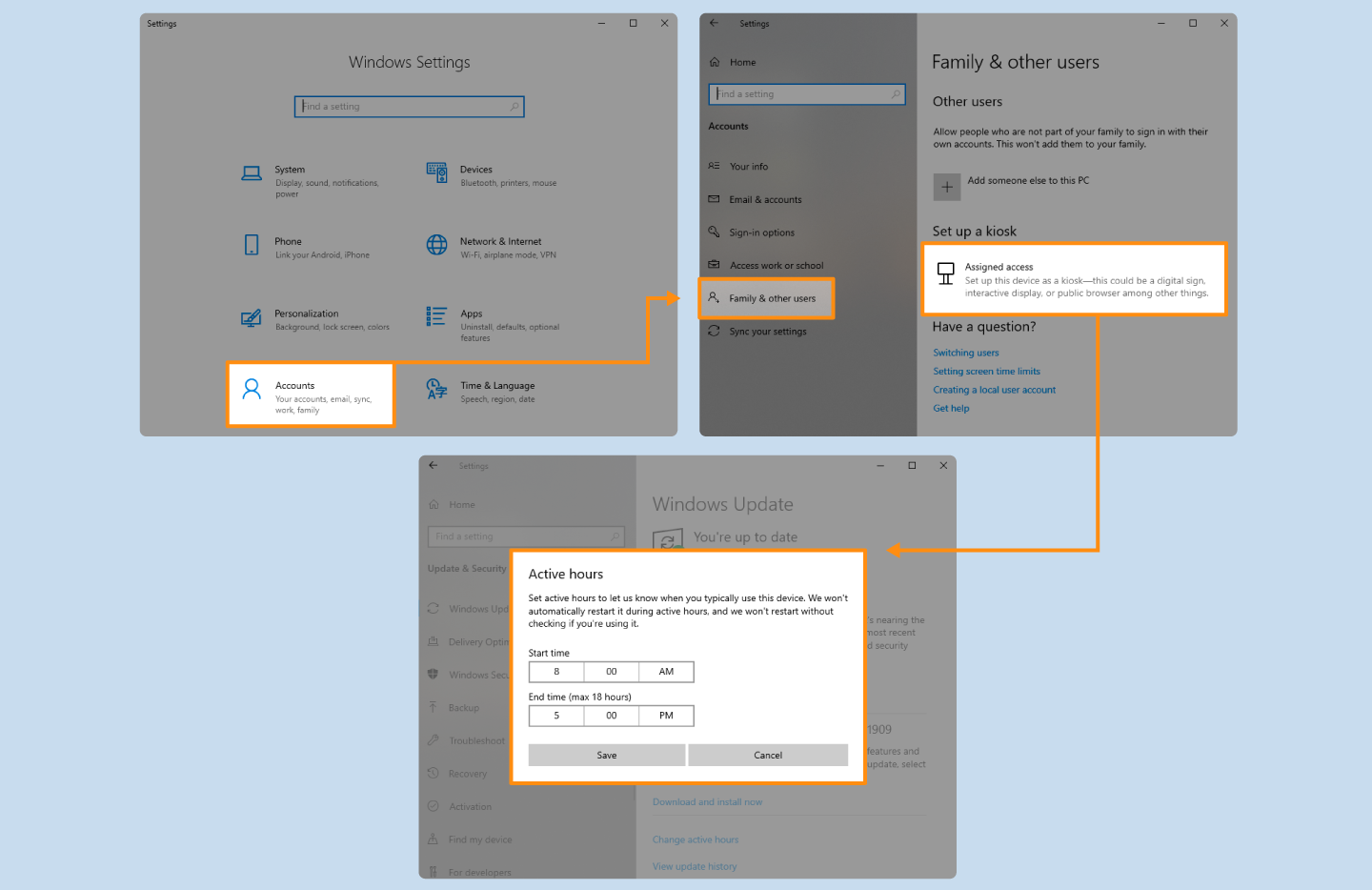
- Open settings from the start menu.
- Choose accounts and select family and other users.
- Set up a kiosk by selecting assigned access.
- Select change active hours.
- Open the screen time tab and set limits.
Limit Screen time on Television
With the rise of streaming services, it may be time to set limitations on your television. Create boundaries by allowing yourself one show per day, or one movie per every two days. Turn off auto-play to limit the temptation to watch the next episode. Although streaming services like Netflix don’t have a built-in screen time limitation settings, third-party apps can assist with tools to curb your habit. Consider adding parental controls to further monitor activity.
Additional Tools for Healthy Digital Relationships
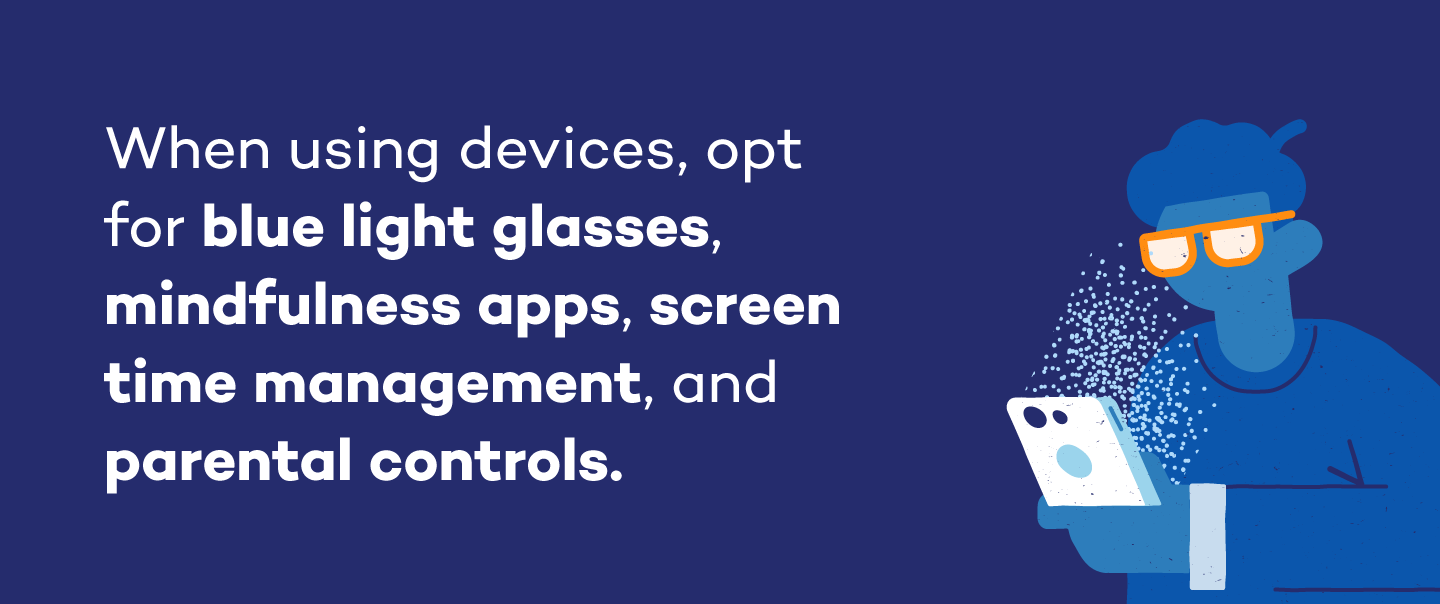
A healthy digital relationship goes beyond managing screen time. Since our daily lives rely heavily on technology, ensuring the safe consumption of media and using supplementary tools can also help. Consider adding the following to your routine:
- Bluelight glasses: Using blue light filtered lenses helps block the absorption of blue light waves and UV rays to reduce eye strain and headaches.
- Apps to promote mindfulness: Mediation reduces signs of anxiety and depression, two major side effects of excessive technology use. Download mindfulness apps to stay accountable when your device is in use.
- Apps to limit screen time: Third-party apps can be especially useful to help track screen time use across devices. This technology can help pinpoint overuse and signal where boundaries are needed.
- Parental controls: Parental controls are especially useful to monitor children online. Setting these disciplines early and continuing to monitor them helps kids develop healthy technology boundaries early.

Understanding how you use technology is the first step to building a healthy relationship. Gauge how much time you’re spending on different software and adjust your strategy accordingly. Turn off excess notifications, limit your screen time habits, encourage a no-technology zone when friends are around, mute and block negative accounts, and finally implement media agreements. If you’re managing your children’s technology use, make sure you’re aware of the ways they can dodge parental controls.
Sources: American Psychological Association | Association for Computing Machinery | Statista | Science Direct | BMC | Springer Link 1, 2 | Research Gate | Psychology Today




